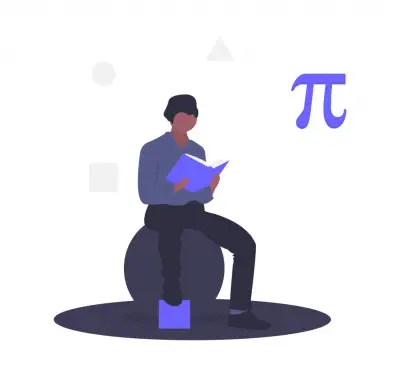
Further Mathematics Questions and Answers
Test your knowledge of advanced level mathematics with this aptitude test. This test comprises Further Maths questions and answers from past JAMB and WAEC examinations.

Test your knowledge of advanced level mathematics with this aptitude test. This test comprises Further Maths questions and answers from past JAMB and WAEC examinations.
If \((x - 5)\) is a factor of \(x^3 - 4x^2 - 11x + 30\), find the remaining factors.
\((x + 3) and (x - 2)\)
\((x - 3) and (x + 2)\)
\((x - 3) and (x - 2)\)
\((x + 3) and (x + 2)\)
Correct answer is A
(x - 5) is a factor of \(x^3 - 4x^2 - 11x + 30\). To find the remaining factors, let's draw out \((x - 5)\) from the parent expression.
\(x^3 - 4x^2 - 11x + 30 = x^3 - 5x^2 + x^2 - 5x - 6x + 30\)
\(= x^2(x - 5) + x(x - 5) - 6(x - 5) = (x - 5)(x^2 + x - 6)\)
∴ To find the remaining factors, we factorize \((x2 + x - 6)\)
\(x^2 + x - 6 = x^2 + 3x - 2x - 6\)
\(= x(x + 3) - 2(x + 3) = (x + 3)(x - 2)\)
∴ The other two factors are \((x + 3) and (x - 2)\)
ALTERNATIVELY
\(∴ x^2 + x - 6 = (x + 3) and (x - 2)\)
In how many ways can four Mathematicians be selected from six ?
90
60
15
360
Correct answer is C
\(=^6C_4\)
\(=\frac{6!}{(4!\times2!)}\)
\(=\frac{6\times5}{2\times1}\)
= 15
\(-\frac{896x^6}{9}\)
\(-\frac{896x^5}{9}\)
\(-\frac{896x^5}{27}\)
\(-\frac{896x^6}{27}\)
Correct answer is C
rth term of a binomial expansion =\(^nC_r-1 a^{n-(r-1)}b^{r-1}\)
\(n = 10,r = 6 \therefore r-1=5\)
6th term =\(^{10}C_5 1^{10} - 5 (-\frac{2}{3}x)^5\)
\(=252*1*-\frac{32x^5}{243}=-\frac{896x^5}{27}\)
\(x^2+8x-15=0\)
\(x^2-2x-15=0\)
\(x^2-8x-15=0\)
\(x^2+2x+15=0\)
Correct answer is B
\(x^2-\)(sum of roots)\(x+\)(product of roots) = \(0\)
\(4x^2-4x-15=0\)
Divide through by 4
\(=x^2-x-\frac{15}{4}=0\)
\(=x^2-x+(-\frac{15}{4})=0\)
\(=x^2-(1)x+(-\frac{15}{4})=0\)
sum of roots =1
= m + (m + 4) = 1
=2m+4=1
=2m=-3
=m=-\(\frac{3}{2}\)
The equation whose roots are 2m and 2m+8
2m=2×-\(\frac{3}{2}=-3\)and \(2m+8=2×-\frac{3}{2}+8=5\)
\(=x^2-(-3+5)x+(-3)(5)=0\)
\(=x^2-2x+(-15)=0\)
\(∴x^2-2x-15=0\)
\(-2,\frac{3}{2}\)
\(2,\frac{3}{2}\)
\(-2,-\frac{3}{2}\)
\(2-,\frac{3}{2}\)
Correct answer is B
\(p = \begin{bmatrix} x&4\\3&7\end{bmatrix}, Q =\begin{bmatrix} x&3\\1&2x\end{bmatrix}\)
\(p = \begin{bmatrix} x&4\\3&7\end{bmatrix}=7x-12, Q =\begin{bmatrix} x&3\\1&2x\end{bmatrix}=2x^2-3\)
|Q| = |P| + 3 (Given)